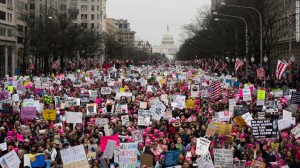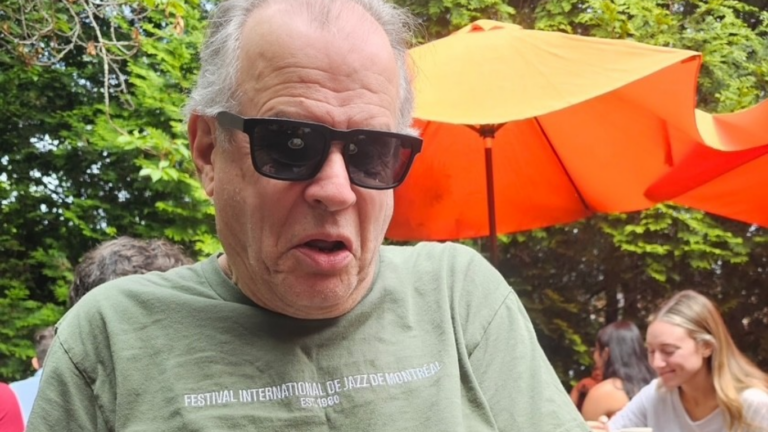 This is not about politics, despite what it looks like, it’s about contrast and how outrage motivates social and personal change. The events with the election, the inauguration and the women’s march has galvanized a huge surge of energy that has taken on meaning. When people organize around what they don’t want, the contrast of what is wanted suddenly becomes clear. It is this clarity that organizes us personally and socially towards change.
This is not about politics, despite what it looks like, it’s about contrast and how outrage motivates social and personal change. The events with the election, the inauguration and the women’s march has galvanized a huge surge of energy that has taken on meaning. When people organize around what they don’t want, the contrast of what is wanted suddenly becomes clear. It is this clarity that organizes us personally and socially towards change.
I was involved in the women’s march in Nashville. It was a powerful display of solidarity of women and men of all ages and races. It was a peaceful, unifying and inspiring show of intelligence and concern, clarifying peoples’ beliefs with newfound direction and purpose.
I’m highlighting this because, in my work, the Law of Polarity is one of the ancient principles that helps us define what is important. When we are in untenable situations, our negative feelings generate the momentum to surge forward toward the contrast – the needed and wanted change.
This is how most change occurs. A quick look at our nation’s history will illustrate how being outraged has worked to create a more enlightened culture.
THE WOMAN’S MOVEMENT
The history of woman’s protests in the US are as old as our country. In 1777, soon after our constitution was ratified, states began taking away women’s right to vote, amending the constitution in 1787 to make it based on state law, effectively nullifying the women’s vote. The outrage over this incongruous stance to “all men are created equal” launched the Suffrage movement in the US, as it was being waged in the UK. It would take women 140 years of hard campaigns to restore voting rights.
In 1913, in the first national march in DC , the day before Woodrow Wilson’s inauguration, 7,000-8,000 women marched down Pennsylvania Ave. demanding the right to vote. It was a violent affair, with the protesters attached by police and crowds alike, the organizers jailed and subjected to inhuman conditions. It wasn’t until August 25, 1920 that the 19th Amendment passed, giving women the right to vote.
Since then, subsequent women’s rights marches have been launched, with varying impact. The “Burn the Bra” protest in 1970 over women’s treatment in the Miss America contests initiated an era of discontent. The “Equal Rights Amendment” marches in DC in the early 1970 resulted in its passage in 1972, pending all states implementing it in 10 years. Illinois held out and those legislative efforts were unsuccessful. “Take Back The Night” marches across the US in the mid 1970’s helped highlight violence toward women and did spur new legislative mandates for domestic violence laws, rape prevention and response. In 2000, the Million Mom March had 300,000 people in the National Mall advocating for sticker gun control. This issue is still being fought with limited to no response.
Despite achieving the right to vote, equality and respect for women, as intended in our constitution, is still not fully understood or appreciated.
THE CIVIL RIGHTS MOVEMENT
The civil rights movement also has a long and violent history. The outrage over slavery didn’t come into social consciousness until the civil war. It became a bargaining chip for the end of the war, with the subsequent Emancipation Proclamation, signed by President Lincoln in December 1865, the 14th amendment in 1868, giving Afro-Americans citizenship and the 15th amendment in 1870, prohibiting discrimination of Afro-American men’s right to vote.
Despite these constitutional changes, the everyday reality was blatant discrimination, oppression, segregation and disenfranchisement in every facet of life. It would be another 100 years before the second wave of protests created real change.
It was Brown-Vs- Board of Education in 1954 and Rosa Park’s refusal to give up her seat on the bus in Montgomery in 1955 and the subsequent yearlong bus boycott that launched the modern civil rights movement. From 1954 through the 1960s, the battle for equal rights in labor practices, voting, educational opportunities and desegregation was fought non-violently through marches, protest and political activism.
On August 28, 1963, the “March On Washington”, a coordinated effort between President Kennedy, civil rights activists and liberal labor unions, would show the nation the power a well-organized, non-violent and widely televised march could have. In the largest protest the country had seen, 250,000 people marched down Pennsylvania Ave. and listened to speakers. The last speaker of the day was Martin Luther King, Jr. It was his “I have a dream” speech that galvanized the nation and paved the way for the Civil Rights Act of 1964 and the Voting Rights Act of 1965.
As Martin Luther King’s said, “I have a dream, that one day this nation will rise up and live out the true meaning of its creed–we hold these truths to be self-evident, that all men are created equal.”
WHERE ARE WE GOING NOW?
The current protest includes all these issues of our past. What started as the outrage of women toward being objectified by Trump’s vulgar language, has expanded to include his derogatory and discriminatory comments on race, religion and gender rights. It is the collective outrage of women and men over the threat to human rights and social justice that has launched this movement.
As reports come in that over a million people have marched across this country and the world, the Women’s March is being called the largest protest the US has ever seen. What will this surge of new found energy do for us? How do you intend to use it for yourself?
If you are like me, you don’t have all the answers. I suggest pondering and considering the following questions that are the underpinning of Transformational Coaching:
What Is Wanting To Happen?
What is the change that is wanting and needing to happen now?
Why is it important to you; what values does it represent?
What is the direction of change that you want to see surface?
Who Is It Calling You To Be?
What kind of person do you want to be in this era of change?
How do you feel called to step up and take part in it?
What is the change that you seek in your life?
What Is It Calling You To Do?
What contrast do you seek to change personally or socially?
What actions can you take to move closer to what you seek?
How will your life be different if you take action?
These questions are intended is to clarify the meaning this momentum of change holds for you. What is important– how can you heed the call to be your best and do what is personally congruent?
In my 6 week workshop, The Manifestation Course, starting Thursday Feb 2, I will give the information, tools and experiential exercises to clarify the direction that you may be seeking. If 2017 is the year you’d like to come closer to living a reality that represents the things that are important to you, let this momentum of change flow through you. This course can bring you closer to your dreams. For more information and registration, call Centered, 859-721-1841 or go to my website, www.spectrumtransformation.com. I’d love to hear from you.
Resources
http://www.rochester.edu/…/us-suffrage-movement-timeline-1…/
http://www.history.com/…/wome…/the-fight-for-womens-suffrage
http://www.nytimes.com/…/the-emancipation-of-abe-lincoln.ht…
http://www.history.com/…/black-history/civil-rights-movementhttp://www.history.com/topics/womens-history/the-fight-for-womens-suffrage
Photo credit – CNN DC Women’s March, 1-21-17








